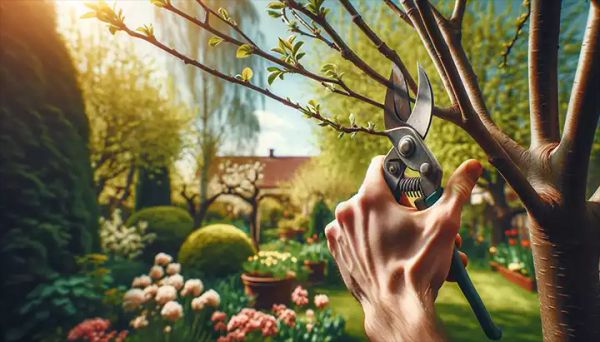Pruning is an important practice for the well-being and structure of trees and shrubs. It may seem like an art form, but it also requires a scientific approach to ensure effective results. Let’s delve into the world of pruning and discover how and when to prune for optimal growth and health.

Understanding Growth Buds
For us to comprehend pruning, it’s essential to understand the concept of growth buds. Apical dominance plays a crucial role in plant growth. It dictates that plants primarily grow from the terminal bud, inhibiting the growth of lateral buds. However, this dominance can vary across species, impacting the number and length of lateral shoots. Additionally, the orientation of limbs also affects apical dominance. Vertical limbs exhibit strong apical dominance, while horizontal limbs lose it altogether, often leading to water sprout growth.

Removing Heavy Branches
When it comes to removing large branches, there is a specific technique to minimize damage to the tree. Begin by making an undercut to prevent the bark from tearing. Then proceed to make a top cut outside the undercut to remove the branch. Finally, finalize the process by cutting close to the branch collar, ensuring no harm comes to it for optimal healing.
General Pruning Process
Timing plays a crucial role in pruning. It is best to prune during dormancy, usually in winter or early spring. Flowering shrubs should be pruned right after they bloom to avoid cutting off the potential buds for the next season. For evergreens, early spring is the ideal time to prune. As for fruit trees, pruning them in early spring helps open up the crown, allowing better light penetration and enhancing fruit production. Roses, on the other hand, should be pruned in the spring, cutting back to healthy, live wood just above an outward-facing bud.
Pruning Techniques
Different pruning techniques serve specific purposes. Thinning involves removing entire shoots back to their origin, encouraging growth at undisturbed shoot tips. Water sprouts and suckers should be regularly removed to prevent energy drain and guide growth. Renewal pruning is beneficial for older trees, as it promotes new growth and allows for better air circulation and light penetration. Finally, it’s important to remove limbs with narrow-angled crotches, as they are weaker and more prone to damage.
Healing and Regrowth
Pruning initiates the healing process in the tree’s cambium layer. To promote faster healing, it’s important to prune as close to the main branch as possible, without damaging the bark ridge or branch collar. Additionally, pruning stimulates regrowth near the cut. The severity of pruning determines the extent of regrowth, as the plant instinctively tries to restore balance between the top and root system.
In summary, pruning trees and shrubs is not merely a matter of cutting back growth. It requires a deep understanding of the plant’s biology and growth patterns. By practicing proper pruning techniques, we can nurture healthy growth, enhance the plant’s aesthetic appeal, and prevent disease and damage. So go ahead, grab your shears, and let’s provide our plants with the pruning care they deserve! Share this article with your fellow gardeners to inspire them on this pruning journey.




